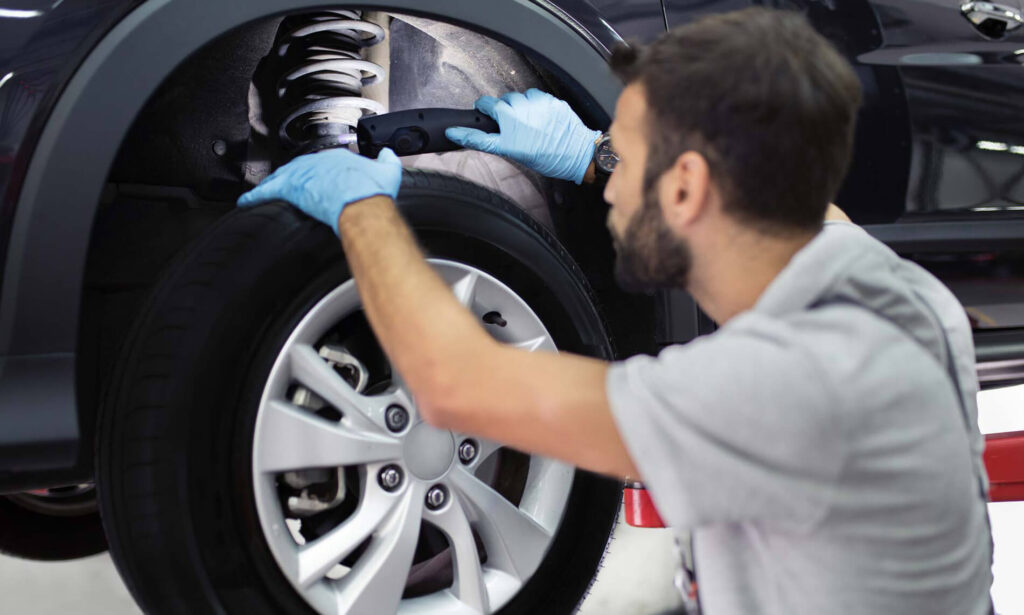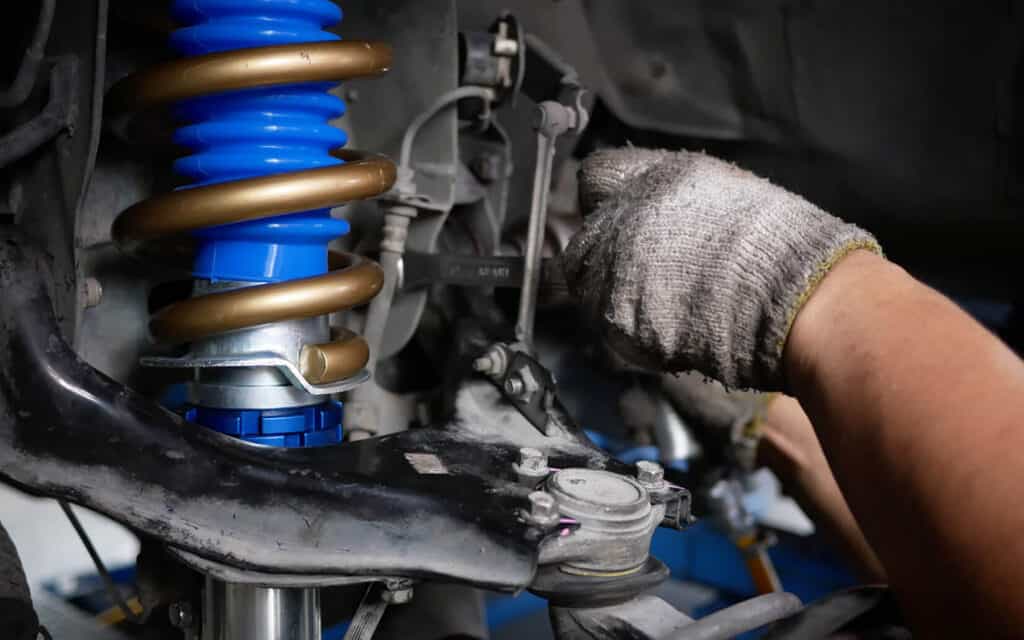Navigating the Bumpy Road of Shock and Strut Misdiagnoses
Let’s be real: your car is like your body’s exoskeleton when you’re driving. Now imagine going to the doctor and getting a misdiagnosis for an aching joint. The fallout isn’t just about money; it’s about the integrity of the system—your health or your car—that keeps you moving. Welcome to the convoluted world of shock and strut misdiagnoses, where the stakes are high and the road is fraught with pitfalls.
Riding on Air or Broken Springs? Understanding Shocks and Struts
When it comes to car performance and comfort, shocks and struts are the unsung heroes of the road. They make up a significant part of your car’s suspension system, ensuring that your ride is smooth and your vehicle responsive. Shocks and struts have a finite lifespan, generally between 80,000 to 100,000 km, after which they start to wear out. Understanding their importance could save you from costly misdiagnoses and potential road risks. Their main job? To absorb the impact from road bumps, potholes, and other surface irregularities so that you don’t have to feel them. They also keep your tires in constant contact with the road, ensuring that your vehicle is stable and handles well.
However, the role of shocks and struts doesn’t stop at giving you a comfortable drive. They have a much bigger responsibility: your safety. When shocks and struts begin to wear out, your vehicle’s ability to handle and brake can become compromised. This could result in decreased steering responsiveness, strange noises, or even uneven tire wear. Essentially, failing shocks and struts may turn your car into a safety hazard. Misdiagnosing these components as being in good condition when they’re not can have a ripple effect on your vehicle’s overall performance and safety.

False Alarms: Common Misdiagnosis for Shock Absorbers and Struts
• Tire Issues: One of the most common misdiagnoses is attributing the symptoms of failing shocks and struts to tire problems. Whether it’s irregular tire wear or vibration while driving, these symptoms often get wrongly classified as unbalanced or misaligned wheels.
• Steering Components: Decreased steering response can be another red herring. Mechanics might incorrectly suspect problems with the steering rack or tie rods instead of the actual culprits: worn shocks and struts.
• Braking Problems: When your vehicle nose-dives during braking, it’s easy to think that you’ve got a brake issue. Mechanics might start looking at brake pads, discs, or even hydraulic systems, missing the real issue lying within the suspension system.
• Bushings and Mounts: Sometimes, the noises that come from a failing suspension system can be attributed to bushings or mounts that are in perfect condition. As a result, you might end up paying for parts and labor that you didn’t need.
• Wheel Bearings: Odd noises and decreased stability may also be incorrectly diagnosed as wheel bearing problems, leading to unnecessary replacements and leaving the actual issue untouched.
• Drive Train: In some cases, the decreased performance and strange vibrations resulting from bad shocks and struts get incorrectly identified as issues with the vehicle’s drive train.
• DIY Guesswork: Some vehicle owners turn to online forums and DIY diagnostic tools to figure out what’s going on. While these resources can sometimes be helpful, they can also lead to self-misdiagnosis and unnecessary spending on wrong parts.
By being aware of these common misdiagnoses, you’re better equipped to discuss the possibilities with your mechanic, increasing the chances of an accurate diagnosis and appropriate repair.
Rattling Skeletons: Other Causes of Clunking Noises When Going Over Bumps
If you’ve ever heard a clunking noise while driving over a bump, you might have attributed it to a problem with your car’s shocks or struts. While they can indeed be culprits, it’s critical to remember that other components might be responsible for these unsettling sounds. Loose wheel bearings, worn-out bushings, or even issues with your car’s sway bar could be the source. Ignoring these possibilities could mean you’re missing the actual issue while focusing on the wrong repair, leading to unnecessary costs and continued poor performance.
But how does one distinguish between a clunk that signals a problem with the shocks and struts versus one that points to another issue? This is where the expertise of a skilled mechanic comes into play. A comprehensive inspection, possibly aided by diagnostic tools, will help identify the root cause of the issue. Misattributing these clunking sounds to failing shocks or struts could lead to unnecessary replacements, leaving the real issue unresolved and adding to your long-term repair costs.
The Human Factor: How Diagnostic Errors Occur
• Inexperienced Mechanics: Sometimes, less experienced mechanics may mistake the symptoms of failing shocks and struts for other issues. For example, they may attribute tire noise or wear to a tire problem rather than a strut issue.
• Time Pressure: Mechanics sometimes work under tight deadlines. This haste can lead to cutting corners in the diagnostic process, resulting in errors.
• Unreliable Diagnostic Equipment: Believe it or not, even the technology designed to help can sometimes make mistakes. Faulty diagnostic tools can yield incorrect results, adding another layer of error to the process.
• Failure to Consult: In some instances, mechanics do not consult with colleagues or seek a second opinion when faced with an ambiguous situation, resulting in unilateral, often incorrect, decisions.
• Overconfidence: Sometimes, even the most experienced mechanics believe they’ve “seen it all,” leading them to quick but inaccurate diagnoses.
• Customer Miscommunication: Poorly described symptoms by vehicle owners can send mechanics down the wrong diagnostic path. For example, “my car feels funny” isn’t as helpful as describing specific issues like vibrations or pulling to one side.
Tech or Trick: Can Car Diagnostics be Wrong?
Many of us have embraced the digital age with open arms, relying heavily on technology for solutions, including when it comes to vehicle diagnostics. While these tools can be highly accurate, they’re not infallible. Electrical interferences, faulty sensors, or even software bugs could produce incorrect diagnostic results. This can lead to misdiagnosis and, consequently, wrong or unnecessary repairs, costing you time and money.
So what’s the best way to ensure that you’re getting an accurate diagnosis? First, never rely solely on automated diagnostic results. Always match these with observable symptoms—does what the machine says correspond with what you’re actually experiencing? Secondly, seek a second opinion. Having another set of eyes look at your vehicle can offer additional insight or confirm initial findings. This is not to undermine the value of modern diagnostic tools, but rather to advocate for a balanced, multi-faceted approach to vehicle diagnostics and repair.

Costly Consequences: Potential Repairs and the Real Cost of Misdiagnosis
The financial toll of misdiagnosing your vehicle’s shocks or struts can be significant.
• Double Expenses on Parts: When your vehicle is misdiagnosed, you end up buying parts that you don’t actually need. Later, you still have to purchase the correct parts, doubling your outlay.
• Labor Costs: Every repair includes not just parts but also labor. A misdiagnosis means paying twice for the time a mechanic spends on your car—once for the incorrect repair and once for the correct one.
• Additional Damages: Incorrectly diagnosed and consequently untreated issues may lead to more severe problems. For example, if shocks and struts are ignored, they can cause further damage to the suspension, brakes, and tires.
• Safety Risks: Operating a vehicle with faulty shocks and struts increases the risk of accidents due to reduced handling and braking efficiency. These risks endanger not just the driver but also passengers and other road users.
• Degraded Resale Value: Frequent misdiagnoses and resultant improper repairs can reduce the longevity and efficiency of your vehicle, impacting its resale value.
• Lost Time and Productivity: Time spent on unnecessary repairs is time lost. This could mean missed work, delayed vacations, and a general loss of personal time and productivity.
The Road Ahead for Accurate Diagnoses
The journey toward accurate diagnosis is fraught with challenges but steering clear of them is not impossible. Always opt for a second opinion and consult multiple sources before proceeding with any repairs. In Canada, for reliable and convenient diagnosis and repairs, consider mobile mechanics like Uchanics. They bring the repair shop to you, ensuring that you’re back on the road, safely and efficiently.
The bottom line? Double-checking and proactive diligence in understanding your car can save you not just money but also ensure your safety on the road.
